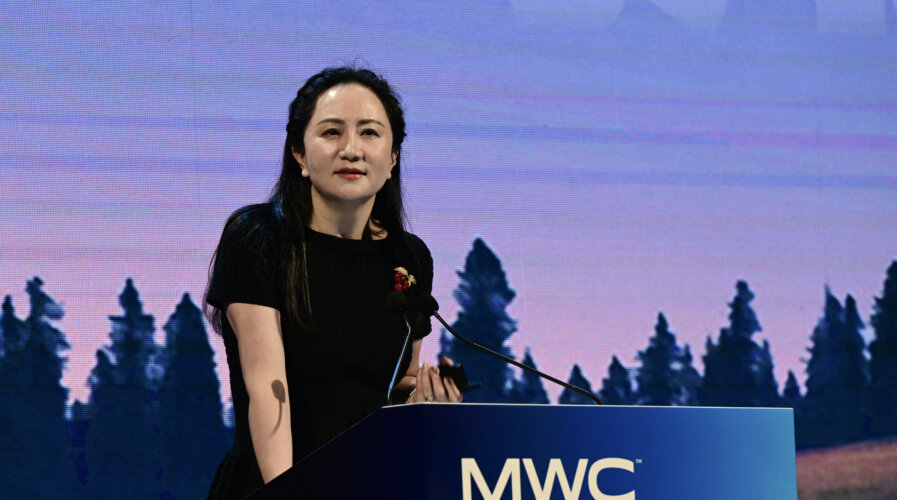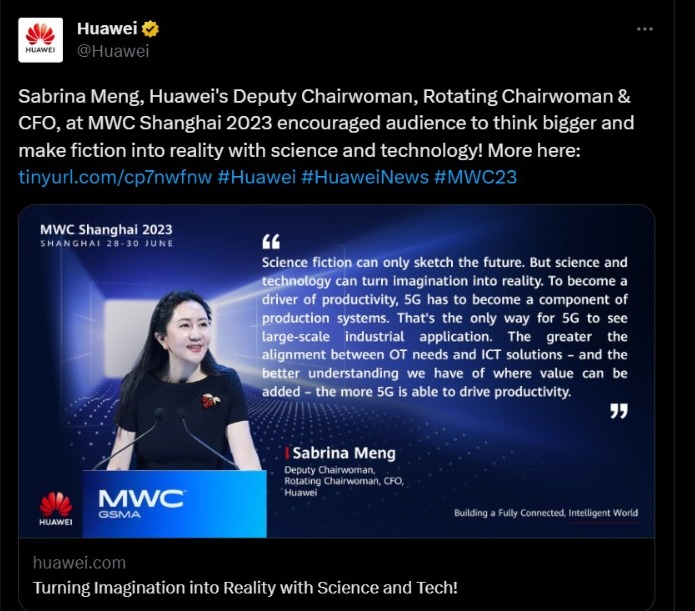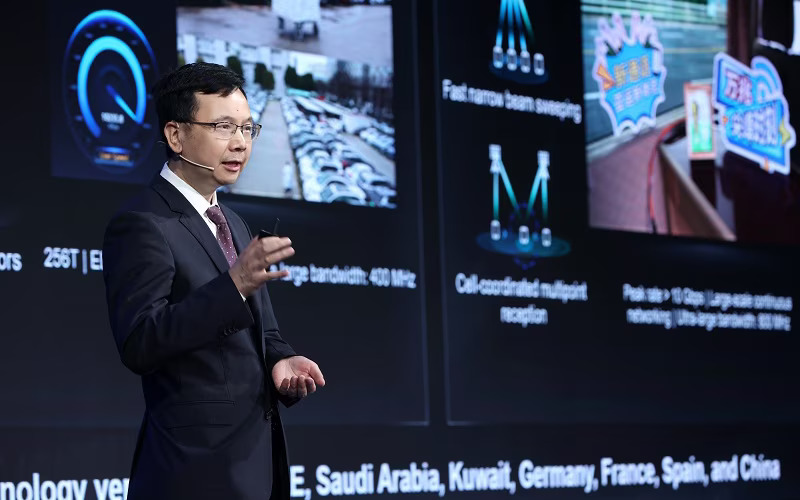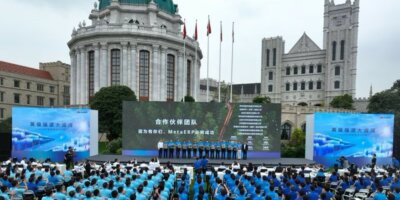
Everything Huawei announced at the Mobile World Congress Shanghai 2023. (Photo by Pedro PARDO / AFP)
Everything Huawei announced at the Mobile World Congress Shanghai 2023
- Huawei announced plans to launch a complete set of commercial 5.5G network equipment next year.
- Huawei has been working on applying AI-native technologies to 5.5G core networks.
The Mobile World Congress (MWC) kicked off in Shanghai on June 28, the first entirely in-person iteration of the event since 2019. Dubbed the leading Asian telecommunications show, vendors took the stage at the three-day event to showcase their cutting-edge breakthroughs across various sectors. As usual, Chinese tech giant Huawei Technologies Co. came to the event in full force, flaunting their 5.5G achievements.
“5G has been in commercial use worldwide for four years. It’s driving new value creation, and 5.5G is the next step forward,” Meng Wanzhou, Huawei’s rotating chairwoman and CFO, said in a keynote speech at the opening day of the MWC Shanghai.
Meng added that since science and technology are moving towards large, complex systems, it’ll require “matching technology to specific scenarios and performing systems engineering to pave the way for 5 G’s ongoing success.”

Huawei’s Deputy Chairwoman, Rotating Chairwoman & CFO, at the Mobile World Congress Shanghai 2023.
What is 5.5g, and why did it dominate the Mobile World Congress 2023?
During the Mobile World Congress 2023, Huawei also proposed the concept of a “5.5G Era” based on an end-to-end solution that integrates comprehensive evolved technologies, including 5.5G, F5.5G, and Net5.5G. The 5.5G Era will feature 10 gigabit peak downlink speeds and gigabit peak uplink speeds to meet increasingly diverse service requirements.
This solution would protect operators’ previous investment in 5G while improving network performance by ten times. It would also refresh the industry vision by using new technologies like passive IoT to unlock a market of 100 billion IoT connections.
5G has been in commercial use for four years. Huawei’s data shows that there are more than 260 commercial 5G networks worldwide, serving over 1.2 billion users, and there are already 115 million gigabit F5G users.
“With service models and content continuously evolving, breakthroughs in technologies like glasses-free 3D create unprecedented immersive experiences for users. However, these new services continue to require stronger 5G network capabilities,” the company said in a statement.
The industry has widely agreed that 5.5G will be a crucial milestone in 5G evolution, and Huawei sees it fast approaching. “5.5G is the next step forward for 5G. 5.5G will feature […] the ability to support 100 billion connections, and native AI,” Meng added in her speech.
5.5g will create incredible new business opportunities with more targeted support for industrial needs in domains like IoT, sensing, and advanced manufacturing.
When will it be commercially available?
At the 5G Advanced Forum during the Mobile World Congress 2023, Huawei announced that they will launch a complete set of commercial 5.5G network equipment in 2024. During the announcement, Huawei’s Director and President of ICT Products & Solutions, Yang Chaobin, said the company intends for this launch to mark the beginning of the 5.5G era for the ICT industry.

Chaobin Yang, Board Member, President of ICT Products & Solutions, Huawei, at the Mobile World Congress Shanghai 2023.
Considering itself an advocate for end-to-end 5.5G solutions, Huawei said it has been working with multiple players across the industry on R&D and verification of crucial 5.5G technologies.
“Significant progress has been made in this verification process, specifically for the vast antenna array (ELAA) which underpins 10-gigabit downlink, flexible spectrum access which helps realize gigabit uplink, and passive IoT which can enable 100 billion IoT connections,” it said.
Additionally, Huawei noted that 50G PON is another critical technology enabling 10-gigabit speeds for F5.5G ultra-broadband networks and is expected to be extensively used in homes, campuses, and productions. “Huawei has worked with over 30 operators worldwide on technological verification and application pilots for these technologies,” the Chinese tech giant shared.
Yang also announced that the company has been working on applying AI-native technologies to 5.5G core networks to enhance network capabilities and availability continuously. This would allow AI capabilities to be delivered to the very ends of networks so that they can better serve numerous industries.
“Net5.5G promises 10-gigabit access, ultra-broadband transport, and microsecond-level latency over AI networks, allowing it to serve as a next-generation network foundation for industrial digitalization by providing high-quality network access,” Huawei noted.
How far are we from 6G?
For technology leaders, the conversations on the sixth generation (6G) mobile system have started. However, Huawei stated that the industry is still in its earliest stages of developing a vision for that network and only just beginning related research into key technologies.
“This is why many have turned to 5.5G as their milestone for future development. The 10-fold improvement in network capabilities in the 5.5G Era is set to enable numerous industries to unleash the productivity of digital technology,” Yang concluded during his presentation at the Mobile World Congress 2023.
READ MORE
- 3 Steps to Successfully Automate Copilot for Microsoft 365 Implementation
- Trustworthy AI – the Promise of Enterprise-Friendly Generative Machine Learning with Dell and NVIDIA
- Strategies for Democratizing GenAI
- The criticality of endpoint management in cybersecurity and operations
- Ethical AI: The renewed importance of safeguarding data and customer privacy in Generative AI applications


